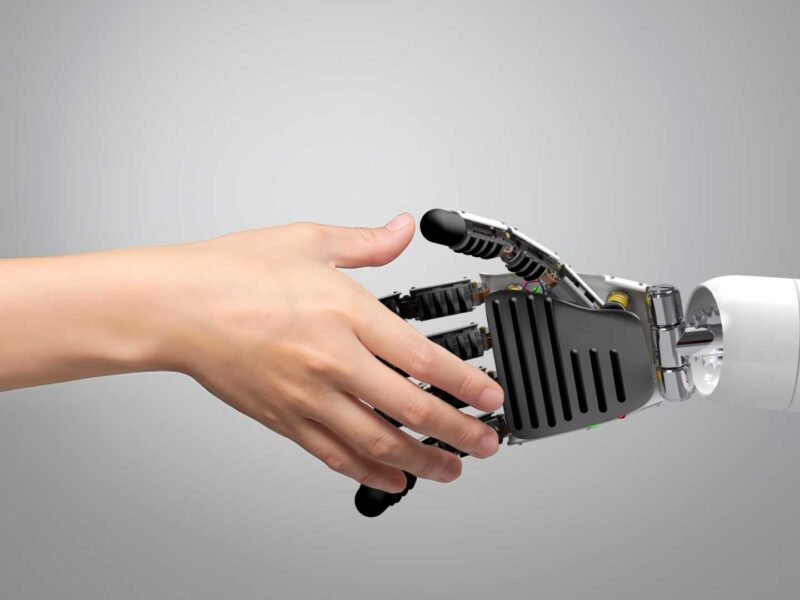Cheaper by Design: Experts on Tech Cost Drops in 2025
As technology adoption surges, costs are plummeting, enabling businesses to leverage cutting-edge solutions in 2025.
This Techronicler article gathers insights from business leaders, thought leaders, and tech professionals on technologies experiencing significant cost reductions.
From Cisco’s advancements in Ethernet switches and 5G to affordable AI models and handheld ultrasounds, these experts highlight how lower costs drive innovation and accessibility.
Discover strategies to capitalize on these trends, optimize operations, and compete in diverse industries, as reduced barriers empower startups, small businesses, and enterprises to adopt transformative tools and reshape the competitive landscape with efficiency and impact.
Read on!
Cisco Drives Networking Cost Reductions in 2025
Cisco’s Perspective: Cost Reductions in Networking Technology In 2025, the networking industry, led by companies like Cisco, has seen significant cost reductions across key technologies, notably Ethernet switches, 5G equipment, and cloud infrastructure, driven by market dynamics, technological advancements, and regulatory changes.
Ethernet Switches: A Cost-Saving Success Ethernet switches, central to Cisco’s portfolio, have become more affordable. In India, a reduction in basic customs duty on carrier-grade Ethernet switches from 20% to 10% has lowered infrastructure costs, supporting faster high-speed network deployments. Globally, the Ethernet switch market grew 15.4% quarter-over-quarter in Q2 2024, stabilizing prices through competitive dynamics.
5G Equipment and Infrastructure The 5G sector has embraced cost-reduction strategies:
– Open RAN (O-RAN) adoption cuts radio access network costs by 20-30% by allowing mixed-vendor equipment.
– In-house development, such as Reliance Jio’s 5G gear, reduces costs by 50-60%.
– Virtualization and software-defined networking minimize reliance on expensive hardware, enhancing operational efficiency.
These advancements make 5G more accessible, particularly in emerging markets.
AI and Network Automation The AI in networks market, valued at $13.33 billion in 2025, drives efficiencies through:
– Automation of network management tasks, reducing labor costs.
– Predictive maintenance, preventing costly downtime.
– Dynamic resource optimization, cutting waste and boosting efficiency.
Cisco’s AI-driven solutions, like AI Canvas, integrate these capabilities, enhancing cost-effectiveness.
Cloud and Data Center Technologies Cloud infrastructure costs have decreased significantly:
– AWS slashed NVIDIA GPU-accelerated EC2 instance prices by up to 45%.
– H100 GPU cloud pricing dropped from $8 per hour to more competitive rates.
– Effective cloud cost optimization strategies can reduce waste by 20-30%.
These reductions enable broader adoption of cloud-based networking solutions.
Market-Wide Cost Drivers
– Increased Competition: The $34.2 billion network equipment market, projected to reach $76 billion by 2035, fosters price competition while sustaining innovation.
– Technological Maturation: As WiFi 7 and 5G reach mass adoption, prices decline, following the technology adoption curve.
– Manufacturing Efficiencies: Initiatives like “Make in India” reduce import costs, enhancing affordability.
Strategic Implications These cost reductions enable greater market penetration, making advanced networking accessible to smaller enterprises and emerging markets. They accelerate digital transformation and shift industry focus toward value-added services like security and performance optimization. Cisco’s leadership in this space underscores the industry’s commitment to affordable, scalable, and high-performance connectivity solutions, democratizing access to cutting-edge technologies.

Supratim Sircar
Software Engineer, Cisco
Mobile Mapping Platforms Slash Costs for Parking Industry
Mobile mapping and live location platforms have experienced a significant drop in price this year.
In the past, it took massive infrastructure and expensive licensing fees to gain access to rich, current parking data. Cloud-based technologies have eliminated these roadblocks, bringing the tools within reach of the smaller operators and independent drivers.
With reduced costs, operators can now supply drivers with accurate, real-time information regarding available spaces. This limits search time and enables improved route planning. Data gathered via these platforms also optimizes lot utilization and forecasts demand patterns.
The economy spurs experimentation. Operators are able to experiment with diverse space management and pricing strategies without committing significant capital. This agility makes for better resource deployment and greater efficiency overall.
Lower-cost access to these platforms also enables smaller landowners to get involved. Underutilized lots can be profit-generating while offering a valuable service to motorists. The implementation of cost-effective technology ultimately enables sound decision-making, safety, and operational planning for all stakeholders.
By providing access to important data, reduced expense speeds solutions to long-standing operational issues, promoting more effective utilization of resources across the industry.

Evan Shelley
Co-Founder & CEO, Truck Parking Club
AI Software Price Drop Empowers Strategic Innovation
Machine learning and artificial intelligence software are far less costly in 2025, and advanced analytics and predictive modeling are within the grasp of more organizations. Historically, such solutions have been costly, requiring dedicated teams and infrastructure, but this is changing rapidly.
For Techcare, that means the capability to roll out intelligent systems that maximize operations, connect customers more effectively, and drive efficiency with lower-than-traditional capital investments.
Being a Managing Director, employing AI to balance technology with human beings has transformed maintaining business growth and process excellence.
The cost-effectiveness also encourages experimentation and faster implementation of innovative solutions. With the help of cost-effectiveness, organizations can test out new AI-based strategies, streamline processes, and unlock insights never in sight due to cost constraints.
This cost trend reveals an even bigger opportunity: technology is no longer a barrier but a strategic building block that allows companies to thrive in competitive spaces.
As Techcare, our mission is to assist clients in utilizing these advances to meet quantifiable returns through the harmonization of innovation, automation, and human creativity.

Oliver Aleksejuk
Managing Director, Techcare
Affordable Handheld Ultrasounds Transform Clinical Access
One transformative shift has been in handheld point-of-care ultrasound (POCUS) devices. A few years ago, portable ultrasound machines cost tens of thousands of dollars and remained out of reach for many small clinics or outpatient settings.
By 2025, however, compact, smartphone-compatible handheld models have become available for as little as $2,000 to $8,000, depending on features and brand.
That price reduction makes a real difference. Smaller clinics and practices can now offer imaging at the bedside—without needing to refer patients out or invest in expensive cart-based systems. It empowers faster diagnoses, greater patient convenience, and more responsive care.
The affordability of these devices encourages broader adoption and moves imaging tools into everyday clinical use rather than being siloed in radiology departments.
That shift matters because it turns imaging from a high-cost bottleneck into a practical, distributed asset—one that enhances care quality and access without breaking the budget.

Belle Florendo
Marketing Coordinator, RGV Direct Care
Microneedling Tech Prices Fall, Skill Becomes Differentiator
Back when I started, a decent microneedling device was priced like a car payment. Now? You can get clinical-grade tech without needing a line of credit. As it turns out, mass manufacturing finally caught up with market demand.
The price drop does not mean it got worse. It just means more providers can now access it without skimping on quality. That opens the door for better care and tighter margins at the same time.
The best part is that it starts to put the focus back where it belongs. On skill. When the barrier to entry is no longer hardware cost, the real differentiator is technique. That puts pressure where it belongs: on training.
Better yet, the savings can be reinvested in education. So yeah, I am here for it. More access, fewer excuses.

Kiara DeWitt
Founder & CEO, Neurology RN, Injectco
Affordable Safety Tech Democratizes Risk Management
In 2025, wearable safety technology has become far more affordable, transforming how companies manage workplace risks.
Just a few years ago, when spacebands started, continuous monitoring of hand-arm vibration and noise exposure was considered cutting-edge and cost-prohibitive for all but enterprise companies. Advances in sensor hardware, falling component prices, and cloud-based analytics have slashed costs dramatically.
Today, SMEs can deploy wearables across their entire workforce at a fraction of the price they would have paid in 2020. This democratisation of safety tech means smaller companies can finally access the same real-time insights, data logs, and risk prevention tools as multinationals. The result: safer workplaces, fewer incidents, and stronger ROI — proving that affordability can drive both compliance and culture change.

Ronan Finnegan
Co-Founder, Spacebands
NVMe SSD Prices Drop, Performance Upgrades Now Affordable
One technology that’s noticeably becoming more affordable in 2025 is consumer-grade NVMe SSDs—particularly PCIe Gen 4 models.
The combination of improved NAND flash manufacturing, increased competition among major brands, and stabilized supply chains is driving prices down.
In fact, consumer SSDs have seen a decline of around 10-15% in pricing as production efficiencies improve and newer technology becomes mainstream.
I saw this firsthand when refurbishing an older client workstation recently. Instead of patching things together with the aging SATA drive, I jumped on the lower-cost Gen 4 NVMe SSD. That upgrade was a noticeable performance boost for under a hundred dollars—even for a modest-capacity drive.
The fast access times and higher throughput felt like a new machine. Lower prices like this make it realistic for small businesses or professionals—especially those on a tighter budget—to invest in meaningful performance improvements.
Mattress Cooling Technology Prices Fall as Market Matures
I’d point to active temperature regulation systems for mattresses. When we first developed the ChiliPad, the core challenge was just making the technology work reliably in a consumer product.
The components, like small-scale thermoelectric coolers and quiet pumps, were specialized and expensive. We were essentially creating a new category from scratch.
Today, those core components are far more accessible and understood. The market has matured. The engineering challenge for new products isn’t about the basic function of heating or cooling water anymore.
It’s about refinement (quieter operation, better app integration). This allows for a wider range of products, and the entry-level price point for reliable active cooling has dropped significantly as a result.
Custom AI Models Now Affordable for Small Teams
In 2025, one of the most noticeable cost drops in our industry has been in fine-tuning and deploying custom AI models at scale — something that just a year or two ago felt like a luxury only well-funded teams could afford.
Back in 2023, if you wanted to build a lightweight model trained on your company’s unique tone, data, or workflows, you were looking at a significant investment: custom engineering, infrastructure, and months of iteration.
Now, with open-weight models and more accessible fine-tuning frameworks, we can spin up tailored AI tools for specific use cases — customer support, sales enablement, internal QA — in days, not months.
What used to be a seven-figure initiative is now something a lean product team can do with a few thousand dollars and smart tooling. That affordability has shifted the mindset entirely: AI isn’t just a core product feature anymore — it’s becoming an internal growth engine, quietly optimizing operations, reducing headcount pressure, and improving experience across the board.
The bottom line? The drop in cost has democratized innovation. Small teams can now move like giants — and that’s already reshaping the competitive landscape.

Patric Edwards
Founder & Principal Software Architect, Cirrus Bridge
On behalf of the Techronicler community of readers, we thank these leaders and experts for taking the time to share valuable insights that stem from years of experience and in-depth expertise in their respective niches.
If you wish to showcase your experience and expertise, participate in industry-leading discussions, and add visibility and impact to your personal brand and business, get in touch with the Techronicler team to feature in our fast-growing publication.













